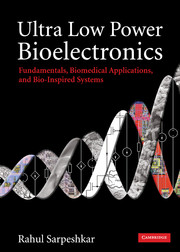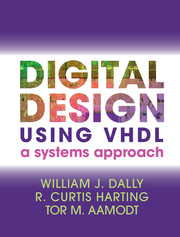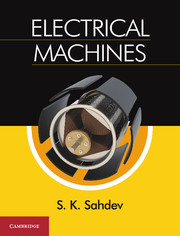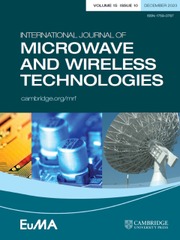Ultra Low Power Bioelectronics
This book provides, for the first time, a broad and deep treatment of the fields of both ultra low power electronics and bioelectronics. It discusses fundamental principles and circuits for ultra low power electronic design and their applications in biomedical systems. It also discusses how ultra energy efficient cellular and neural systems in biology can inspire revolutionary low power architectures in mixed-signal and RF electronics. The book presents a unique, unifying view of ultra low power analog and digital electronics and emphasizes the use of the ultra energy efficient subthreshold regime of transistor operation in both. Chapters on batteries, energy harvesting, and the future of energy provide an understanding of fundamental relationships between energy use and energy generation at small scales and at large scales. A wealth of insights and examples from brain implants, cochlear implants, bio-molecular sensing, cardiac devices, and bio-inspired systems make the book useful and engaging for students and practicing engineers.
- Uniquely covers both ultra low power electronics and bioelectronics in one volume
- Contains chapters on batteries, energy harvesting, and the future of energy for a complete understanding of the relationships between energy and power on small and large scales
- Includes a wealth of practical examples and case studies, with problem sets and lecture slides available online
Reviews & endorsements
'… an excellent overview of ten key fundamental principles related to ultra low power circuit and system design. Examples of many practical, experimental micro-power systems in cardiac, neural,and other medical-electronics applications make the text highly useful. Practitioners in this field will gain insight from his system-level analysis, which is presented at a level deeper than that found in most texts. In fact, the focus on systems thinking and connections made to a diverse set of problems - natural and man-made, from medical implants, to cells, to low-power cars - truly sets this book apart.' Tim Denison, Medtronic Fellow
'This truly interdisciplinary book is about much more than circuits. It contains the most comprehensive and deep treatment I have seen of the interplay and parallels between biology and circuits, and of how one discipline can inform the other. The comparisons between analog, digital, and biological implementations are fundamental and highly valuable. The breadth of the book is unique, ranging from feedback and antennas to battery chemistry.' Yannis Tsividis, Columbia University
'Sarpeshkar's focus on modeling cells as analog rather than digital circuits offers a new approach that will expand the frontiers of synthetic biology. Rahul has nicely laid a foundation that many of us in synthetic biology will be able to build on.' James Collins, Boston University
Product details
December 2010Adobe eBook Reader
9780511855894
0 pages
0kg
406 b/w illus. 15 tables 150 exercises
This ISBN is for an eBook version which is distributed on our behalf by a third party.
Table of Contents
- Part I. Foundations: Ten chapters lay a foundation in device physics, noise, and feedback systems including nano scales in a highly original fashion, emphasizing intuitive thinking. This foundation is important in designing and analyzing ultra-low-power systems in both electronics and biology
- Part II. Low-Power Analog and Biomedical Circuits: Five chapters present building-block circuits that are useful for ultra-low-power biomedical electronics and analog electronic systems in general
- Part III. Low-Power RF and Energy-Harvesting Circuits for Biomedical Systems: Three chapters provide an in-depth description of energy-efficient power and data radio-frequency (RF) links that are fundamental to biomedical systems
- Part IV. Biomedical Electronic Systems: Two chapters provide an in-depth look at ultra-low-power implantable electronics and ultra-low-power noninvasive electronics for biomedical applications, respectively. Case studies for cochlear implants for the deaf, brain implants for the blind and paralyzed, wearable cardiac devices, and biomolecular sensing are provided
- Part V. Principles for Ultra-Low-Power Analog and Digital Design: Two chapters discuss principles for ultra-low-power digital design and ultra-low-power analog and mixed-signal design, respectively. The chapters identify ten fundamental principles that are common in both biology and electronics, analog and digital design
- Part VI. Bio-Inspired Systems: A chapter on neuromorphic electronics discusses electronics inspired by neurobiology followed by a chapter that discusses a novel form of electronics termed Cytomorphic Electronics, electronics inspired by cell biology. These chapters discuss applications of bio-inspired systems to engineering and medicine, deep connections between chemistry and electronics, and provide a unifying viewpoint of ultra-low-power design in biology and in electronics
- Part VII. Energy Sources: A chapter on batteries and electrochemistry discusses how batteries work from a unique circuit viewpoint. The last chapter discusses energy harvesting in biomedical systems at portable scales (vibration and body heat) and at larger scales (low-power cars and solar cells). Principles of low-power design are shown to extend from small scales in electronics to larger scales and to non-electrical systems. This book reveals the deep connections between energy use and energy generation, vital for sustainable energy systems of the future.





